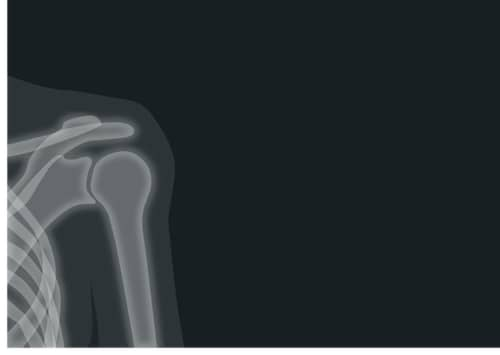We all experience back pain from time to time, but how do you know when it’s more than just an annoying ache? Could it be something more serious that needs immediate medical attention? Understanding the signs and symptoms can help you make informed decisions about your health and well-being.
Types of Back Pain Among Patients
| Type of Back Pain | Prevalence (%) |
|---|---|
| Mechanical Pain | 97% |
| Radicular Pain | 2% |
| Inflammatory Pain | 1% |
This histogram illustrates the prevalence of different types of back pain among patients, highlighting the dominance of mechanical pain.
When Should You Be Concerned About Back Pain?
Back pain is incredibly common. In fact, according to the American Chiropractic Association, around 80% of Americans will experience back pain at some point in their lives. But when is it more than just a muscle strain or a sign of poor posture? The key is to recognize certain warning signs that could indicate a more serious underlying issue.
Persistent or Severe Pain: A Red Flag
One of the first questions to ask is: How long have you had the pain? If you’ve been experiencing back pain for more than six weeks, it’s important to take it seriously. Chronic pain can often signal a problem with the spine, nerves, or other structural components of the back. Severe pain that doesn’t improve with rest or gets worse at night should also be evaluated.
Did you know? The American College of Physicians recommends that people who have had back pain lasting longer than 12 weeks should seek further evaluation, especially if it doesn’t respond to over-the-counter treatments.
Do You Have Numbness or Weakness?
Another crucial question is: Do you have accompanying symptoms like numbness or weakness? Numbness, tingling, or weakness in your legs could indicate a compressed nerve, such as sciatica. If these symptoms are present, it could point to a herniated disc or spinal stenosis—conditions that require medical evaluation.
In some cases, sudden loss of bladder or bowel control along with back pain could signal a condition known as cauda equina syndrome. This is a medical emergency, and it requires immediate attention to prevent permanent nerve damage.
What About Fevers or Weight Loss?
Have you experienced fever, chills, or unexplained weight loss along with your back pain? This could be a sign of infection or even cancer. While this is rare, it’s important to recognize these symptoms as they may indicate something more serious. Studies have shown that about 1-2% of people with back pain may have an underlying systemic condition like infection or malignancy (Journal of General Internal Medicine).
Did you know? According to the Cleveland Clinic, fever alongside back pain might indicate an infection of the spine, especially if the pain is constant and does not improve with rest.
Understanding the Different Types of Back Pain
Let’s break it down: Not all back pain is created equal. Here are some common types:
- Mechanical Back Pain: This is the most common form of back pain and usually results from muscle strains, ligament sprains, or joint issues. It often improves with rest and gentle exercise.
- Radicular Pain: This type is typically sharp and travels along a nerve—often into the legs. It is often caused by conditions like sciatica or herniated discs.
- Inflammatory Back Pain: This pain tends to improve with activity and gets worse with rest. It is associated with autoimmune conditions like ankylosing spondylitis.
Did you know? Mechanical back pain accounts for about 97% of all back pain cases, while the remaining cases are often attributed to underlying medical conditions (National Institute of Neurological Disorders and Stroke).
The Cost of Ignoring Serious Back Pain
Ignoring serious back pain can be costly—not only financially but also in terms of quality of life. Data from the Global Burden of Disease Study ranks low back pain as the leading cause of disability worldwide. Ignoring red flags could lead to increased healthcare costs and prolonged disability.
Take, for example, the cost of an MRI scan, which can range from $400 to $3,500 depending on the facility. Getting an early diagnosis may prevent unnecessary treatments and hospital visits, saving time and money in the long run.
Table: Symptoms and Possible Conditions
| Symptom | Possible Condition |
|---|---|
| Persistent back pain > 6 weeks | Spinal problems, chronic strain |
| Numbness/Weakness in legs | Herniated disc, Sciatica |
| Sudden bladder issues | Cauda equina syndrome |
| Fever and chills | Spinal infection |
| Unexplained weight loss | Cancer or systemic infection |
How to Ease Back Pain Before Seeing a Doctor
There are some steps you can take at home to ease your back pain if it’s not accompanied by any of the red flags we’ve discussed. Applying hot or cold compresses, staying active (but avoiding heavy lifting), and gentle stretching can often help. Over-the-counter pain relievers such as ibuprofen are also recommended for short-term relief.
However, if your pain is severe or persistent, it’s crucial not to ignore it. Your body might be telling you that something is wrong. Seeking medical attention sooner rather than later can help prevent complications and even make recovery more straightforward.
Methods of Back Pain Treatment and Their Effectiveness
| Treatment Method | Effectiveness (%) |
|---|---|
| Physical Therapy | 40% |
| Medications | 30% |
| Injections | 15% |
| Surgery | 5% |
| Alternative Methods | 10% |
This histogram illustrates the effectiveness of various treatment methods for back pain, helping to highlight which options are most successful.
Our Editorial Advice
Listen to your body and take action if something doesn’t feel right. While back pain is common, not all back pain is harmless. Watch for persistent symptoms, numbness, or changes in bodily function—these are signals that warrant medical evaluation. And remember, if in doubt, it’s always better to err on the side of caution. Keeping informed and staying proactive about your health is the key to enjoying a pain-free and fulfilling life—just add that pinch of salt!
About the Author
Reyus Mammadli is the author of this health blog since 2008. With a background in medical and biotechnical devices, he has over 15 years of experience working with medical literature and expert guidelines from WHO, CDC, Mayo Clinic, and others. His goal is to present clear, accurate health information for everyday readers — not as a substitute for medical advice.







